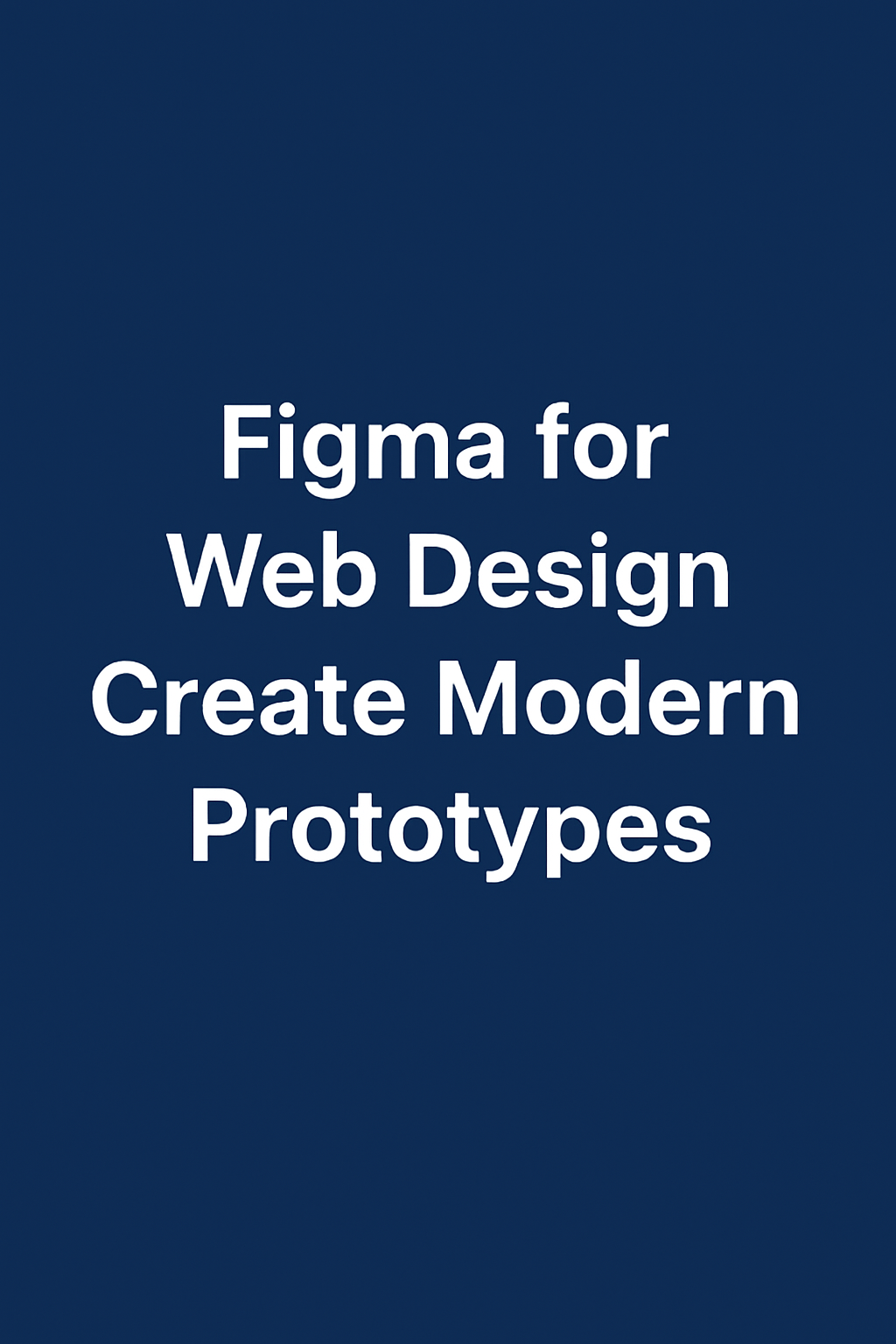Prototyping is where web design goes from idea to interaction. A good prototype helps you test user flows, validate design decisions, and hand off an implementable specification to developers. If your agency or client cares about responsive web design, UI/UX, performance, and SEO — all topics TechGroomers writes about on its blog — Figma is the fastest, most collaborative tool to get there. techgroomers.com
Below is a practical, step-by-step guide to using Figma to create modern, production-ready web prototypes (plus the high-value keywords TechGroomers readers love: responsive web design, mobile-first, UI/UX, performance, SEO, components, and prototyping).
1) Start with research & mobile-first wireframes
Before you open Figma, sketch the user flows and map pages (homepage → category → product / landing → signup, etc.). Adopt a mobile-first mindset: begin with the smallest screen and scale up. Mobile-first wireframes make layouts simpler and force prioritization of content — a best practice TechGroomers recommends for modern sites. techgroomers.com
Quick Figma trick: create a “Wireframes” page with 1-col mobile frames (375×812) using simple rectangles and placeholder text. Use consistent spacing (8px grid) so it’s easy to scale later.

2) Build a design system and reusable components
Create a dedicated Figma file for your design system (colors, typography, spacing tokens). Convert repeating pieces into Components (header, footer, card, button). Use Variants for states (default / hover / active) and Autosize text for responsiveness.
Why this matters: components speed up prototyping, ensure UI consistency, and enable quick updates across pages — essential when your design needs to align with SEO copy and brand assets.
3) Layout responsive frames with Auto Layout & Constraints
Use Auto Layout to build flexible components that adapt to content changes (e.g., buttons, product cards). For page-level responsiveness, create frames for mobile, tablet, and desktop and apply Constraints (left/right, center, scale) to elements so they resize predictably.
Pro tip: set layout grids for each breakpoint (e.g., 4-col mobile, 8-col tablet, 12-col desktop). That keeps your responsive web design disciplined and speeds handoff to developers.
4) Make the prototype interactive
Turn static screens into interactive experiences with Figma’s Prototype features:
- Link frames with flows (on click / while hovering).
- Use Smart Animate for smooth transitions.
- Add Overlays for modals, and Scroll for long pages.
- Use interactive components (tap, hold) to simulate real UI behavior.
Interactive prototypes let you validate UX before front-end work — reducing rework and supporting better conversion optimization (a point emphasized in TechGroomers’ UX and conversion posts). techgroomers.com
5) Optimize for performance & real-world constraints

Prototypes should reflect realistic asset sizes and performance practices:
- Use optimized images (webp/AVIF) and placeholders that indicate lazy loading.
- Simulate image lazy loading in flows (load low-res placeholder, then replace on scroll).
- Keep animations subtle and performant.
These performance best practices mirror TechGroomers’ guidance on site speed and lazy loading — faster prototypes help you spot bottlenecks early. techgroomers.com
6) Use plugins and AI to speed tasks
Figma has a rich plugin ecosystem: auto-layout helpers, icon libraries, image placeholders, accessibility checkers, and CSS export tools. Combine plugins with AI-powered tools for faster copy generation, color suggestions, or accessibility audits. TechGroomers highlights AI and toolkits that speed marketing and dev workflows — use them to iterate faster. techgroomers.com
Recommended plugins to try:
- Content Reel / Unsplash (images & sample content)
- Figma Tokens (design tokens)
- Stark (accessibility)
- Anima / FigJam integrations for handoff notes
7) Test with real users & iterate
Export an interactive link and run quick usability sessions (3–5 users). Focus on key flows: find, add to cart, sign up. Note friction points and iterate in Figma — reuse components to apply fixes across all screens.
A/B test different CTA phrasing and microcopy to improve conversions (this ties into SEO and content strategies many TechGroomers articles cover).
8) Handoff to developers (clean, shareable assets)
Prepare a handoff page with:
- Component library and token reference (colors, font sizes).
- Exportable assets (SVGs for icons, compressed images).
- Interaction notes and a prototype link.
- CSS snippets (Figma’s Inspect panel) and a redline for spacing.
For WordPress/eCommerce projects, map components to reusable blocks or CMS templates — that reduces dev time and keeps the design consistent with SEO/content needs TechGroomers recommends for high-performing sites. techgroomers.com




Leave a Reply